Otoplasty in Iran
Search and Compare the Best Clinics and Doctors at the Lowest Prices for Otoplasty in Iran

Find the best clinics for Otoplasty in Iran
No clinics available
Egypt offers the best prices Worldwide
Price: $ 100

- Home
- Iran
Compare Before & After Photos of _procedure_photos.phpOtoplasty
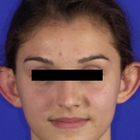
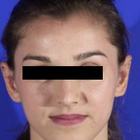
Front view
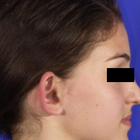
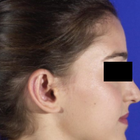
Full-side view
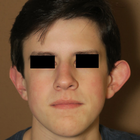

Front view

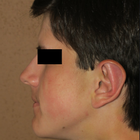
Full-side view
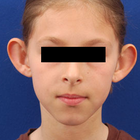
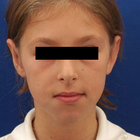
Front view
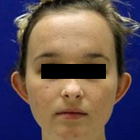
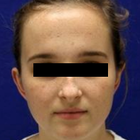
Front view
WHY US?
At Medijump, we're making medical easy. You can search, compare, discuss, and book your medical all in one place. We open the door to the best medical providers worldwide, saving you time and energy along the way, and it's all for FREE, no hidden fees, and no price markups guaranteed. So what are you waiting for?

Free

Best Price

Widest Selection

Risk-Free
What you need to know about Otoplasty in Iran

Otoplasty, also referred to as cosmetic ear surgery, is a type of cosmetic procedure to change the size, shape, or position of the ear. It is performed on the visible part of the outer ear, called auricle. Some people choose to have the surgery to correct odd-shaped ears due to an injury or birth defect. Others have it because they are concerned with how their ears protrude too far from their head. Otoplasty can be performed at any age after the ears have reached their full size, generally after age 5. In some cases, the surgery may be done as early as age 3.
There are several types of otoplasty. The following are the most common:
- Ear pinning draws the ears closer to the head. It is usually done on people whose ears stick out too far from their head.
- Ear augmentation is ideal for individuals whose ears are small or have not completely developed. This type of otoplasty can increase the size of the outer ear.
- Ear reduction is usually done on people with macrotia, which is a condition when the ears are larger than normal. Otoplasty can reduce the size of the ears.
What does a Otoplasty Procedure Involve?
Otoplasty is typically carried out under local anesthesia with a sedative, so you will be awake but you will not feel any pain. In some cases, general anesthesia may be used, typically for younger children.
The techniques used by your surgeon vary based on the type of otoplasty you are having. In general, your surgeon makes an incision either within the inner creases of your ears or on the backs of your ears. Then, your surgeon manipulates the tissue of the ear, which may include removal of cartilage or skin, grafting of cartilage to the ear, or folding and shaping of cartilage using permanent stitches. Once your surgeon is done correcting the shape, size, and position of your ears, the incisions are closed with stitches.
How Long Should I Stay in Iran for a Otoplasty Procedure?
Otoplasty can take between 1 and 3 hours to perform, depending on the complexity and the specifics of the procedure. It is typically done as an outpatient procedure, which means you can leave the hospital on the same day. It is recommended that you stay in Iran for 7 more days for follow-up checkups and removal of stitches.
What's the Recovery Time for Otoplasty Procedures in Iran?
The recovery period may vary from one person to another. You may experience numbness for several weeks, and mild bruising for about 2 weeks. For several months, your ears may feel stiff and sore.
You should be able to go back to work and resume your normal activities, including exercise, within one to two weeks after surgery. Physical contact sports, such as rugby, football, or judo, should be avoided for at least 3 months. You should also avoid swimming for up to 8 weeks following your otoplasty.
What sort of Aftercare is Required for Otoplasty Procedures in Iran?
Your surgeon will provide post-operative instructions. Make sure to follow the instructions carefully to promote smooth and quick recovery. You should rest with your head elevated on 2-3 pillows to minimize swelling. It is recommended that you eat a light, soft, and cool diet for several days. Take pain medication as prescribed by your doctor. Avoid sleeping on your side or rub the incisions to keep pressure off your ears. Consider wearing shirts with loose-fitting collars or button-down shirts.
What's the Success Rate of Otoplasty Procedures in Iran?
Otoplasty is a safe and effective procedure, with high satisfaction rates. More than 90% of people who had the procedure claimed to be extremely happy with the results. Note that it may take some time for the result to be fully visible.
While it is a safe procedure, you still need to be aware of possible risks and complications that otoplasty carries. These include bleeding, hematoma formation, infection of the skin, infection of the cartilage of the ear, permanent or temporary numbness around the affected area, scar or keloid formation, unfavorable results, prolonged pain, narrowing of the external ear canal, impaired healing, changes in skin sensation, asymmetry, and overcorrection.
Are there Alternatives to Otoplasty Procedures in Iran?
There are not many viable alternatives to otoplasty as of yet. One of the most popular alternatives is nonsurgical otoplasty, which does not require any incisions. The procedure uses special sutures to pin the ears back and achieve a more symmetrical look. These sutures are woven into the ears and will remain in place permanently. They are also virtually invisible, so the results will look natural.
For babies under three months old with prominent ears, ear-molds can be taped to their ears to reshape the ears without surgery. This type of treatment typically takes about six to eight weeks.
What Should You Expect Before and After the Procedure
Before otoplasty, you may have prominent or large ears or other deformity caused by an injury or birth defect that bothers you. Some people also feel self-conscious and embarrassed by the shape, size, and position of their ears. After the procedure, your ears will be corrected. Small or underdeveloped ears will be augmented to increase the size, the size of large ears will be reduced, and prominent ears will be drawn closer to the head. Your appearance will improve and you may feel more confident.
Whilst the information presented here has been accurately sourced and verified by a medical professional for its accuracy, it is still advised to consult with your doctor before pursuing a medical treatment at one of the listed medical providers
No Time?
Tell us what you're looking for and we'll reachout to the top clinics all at once
Enquire Now

Popular Procedures in Iran
Prices Start From $28

Prices Start From $1,945

Prices Start From $120

Prices Start From $275

Recommended Medical Centers in Iran for procedures similar to Otoplasty

- Interpreter services
- Translation service
- Religious facilities
- Medical records transfer
- Medical travel insurance
- Health insurance coordination
- TV in the room
- Safe in the room
- Phone in the room
- Private rooms for patients available

- Interpreter services
- Translation service
- Religious facilities
- Medical records transfer
- Medical travel insurance
- Health insurance coordination
- TV in the room
- Safe in the room
- Phone in the room
- Private rooms for patients available

- Interpreter services
- Translation service
- Religious facilities
- Medical records transfer
- Medical travel insurance
- Health insurance coordination
- TV in the room
- Safe in the room
- Phone in the room
- Private rooms for patients available

- Interpreter services
- Translation service
- Religious facilities
- Medical records transfer
- Medical travel insurance
- Health insurance coordination
- TV in the room
- Safe in the room
- Phone in the room
- Private rooms for patients available

- Interpreter services
- Translation service
- Religious facilities
- Medical records transfer
- Medical travel insurance
- Health insurance coordination
- TV in the room
- Safe in the room
- Phone in the room
- Private rooms for patients available
Otoplasty in and around Iran
Introduction
Iran is a country situated in Western Asia, as well as the second-largest in the Middle East. It is home to one of the oldest civilizations in the world, starting from the fourth millennium BC when the Elamite Kingdoms were formed. Iran is widely known as the jewel in Islam’s crown, filled with awe-inspiring architecture and friendly people. The country is also a popular medical tourism destination due to its efficient healthcare system and experienced specialists. The medical centers in the country keep pace with the latest medical developments and provide top-class services. International medical tourists usually come to Iran for cosmetic procedures, which are currently witnessing a vast growth. Cosmetic procedures in the country, such as rhinoplasty and hair transplant, are performed with advanced scientific techniques and are highly successful. Furthermore, the healthcare cost in the country is a lot more affordable than in many other Western countries.
Popular Cities and Regions in Iran
The capital of Iran, Tehran, is the most populous city in the country. Situated at the foot of the snow-capped Alborz mountain range, the city is filled with museums, restaurants, parks, and friendly people. The most popular landmark in this city is the Azadi Tower, which is the symbol of the city. Besides this tower, visitors can also go to the Tehran City Theater to see its amazing architecture, explore the Treasury of the National Jewels to admire the largest collection of jewels found in the world and visit the Golestan Palace, which is the oldest historic monument in Tehran. Besides Tehran, Tabriz is another popular city and it is a modern industrialized city with a very rich history and historical monuments, such as the Blue Mosque and El Goli.
Transport in Iran
The main international airport is the new Imam Khomeini International Airport in Tehran. It serves international flights to and from numerous cities around the world, including Dubai, Ankara, London, Bangkok, and Beijing. Budget airlines are operating from this airport, such as Pegasus Airlines and Air Asia. To get around Iran, domestic flights are affordable and fast. Buses and trains are also widely available with extensive networks. Taxis are best for inter-city travel.
Visas in Iran
Iran allows citizens of 16 countries to visit without a visa for up to 90 days, including Armenia, China, and Malaysia. Most citizens of other countries can obtain a visa on arrival. However, visa on arrival does not apply to citizens of 14 other countries, such as the US and the UK.
Weather in Iran
Iran experiences four seasons. Spring (March-May) and autumn (September –October) are pleasant with mild temperatures. Summer (June to August) can be scorching hot, with the temperatures soaring to 37°C. The winter can get bitterly cold as the temperatures drop to 0°C.
Additional Info
- Local Currency: The official currency is the Iranian rial (IR). 1 USD is approx. 41,921 IR.
- Money & Payments: You cannot use ATMs, credit or debit cards, or traveler's cheques in Iran. Therefore, bring all you’ll need in cash.
- Local Language: Persian is the official language in Iran. However, the country has several main languages, including Azerbaijani and Kurdish. Not many people speak English in the country.
- Local Culture and Religion: About 99% of Iran’s population is Muslims, with the Shia branch of Islam as the biggest. The two largest non-Muslim religious minorities are Christianity and Bahá'í Faith.
- Public holidays: Islamic Revolution Day, Nature Day, Eid e-Fitr, and Eid-e-Qorban are some of the most important public holidays in Iran.
Popular Searches
- Plastic Surgery in Thailand
- Dental Implants in Thailand
- Hair Transplant in Thailand
- Breast Augmentation Thailand
- Gastric Sleeve in Thailand
- Gender Reassignment Surgery in Thailand
- Laser Hair Removal in Bangkok
- Botox in Bangkok
- Dermatology in Bangkok
- Breast Augmentation in Bangkok
- Coolsculpting in Bangkok
- Veneers in Turkey
- Hair Transplant in Turkey
- Rhinoplasty in Turkey
- Stem Cell Therapy in Mexico
- Rhinoplasty in Mexico
- Liposuction in Mexico
- Coolsculpting in Tijuana
- Rhinoplasty in Korea
- Scar Removal in Korea
- Gastric Sleeve in Turkey
- Bone Marrow Transplant in India
- Invisalign in Malaysia
- Plastic Surgery in the Dominican Republic
- Tummy Tuck in the Dominican Republic
- Plastic and Cosmetic Surgery in Poland
- Rhinoplasty in Poland
- Hair Implant in Poland
- Dental Implants in Poland
- IVF in Turkey